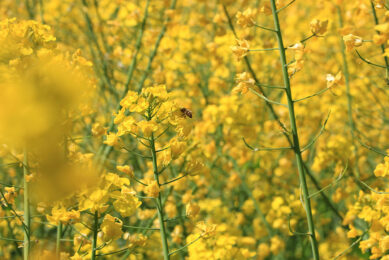Effects of replacing soy with rapeseed on growers-finishers

A study set out to investigate the effects of dietary inclusion of 20% rapeseed meal as an alternative to soybean meal in a 3-month feeding experiment with growing-finishing pigs.
Dietary alteration affected growth performance, several carcass traits and transcriptional responses in the skeletal muscle but did not affect measured meat quality traits. In general, pigs fed the rapeseed meal test diet exhibited reduced growth performance compared to pigs on the soybean control diet. Significant transcriptional changes in the skeletal muscle of growing pigs fed the rapeseed meal diet were likely the consequence of an increased amount of fibre and higher polyunsaturated fatty acids, and the presence of bioactive phytochemicals, such as glucosinolates.
Sequencing data
RNAseq pipeline using Tophat2-Cuffdiff identified 57 upregulated and 63 downregulated genes in pigs fed rapeseed meal compared to those fed soybean meal. Significantly enriched among downregulated pathways was p53–mediated signaling involved in cellular proliferation, while activation of negative growth regulators (IER5, KLF10, BTG2, KLF11, RETREG1, PRUNE2) in pigs fed rapeseed meal provided further evidence for reduced proliferation and increased cellular death, in accordance with the observed reduction in performance traits.
Upregulation of well-known metabolic controllers (PDK4, UCP3, ESRRG and ESRRB), involved in energy homeostasis (glucose and lipid metabolism, and mitochondrial function), suggested less available energy and nutrients in pigs fed rapeseed meal. Furthermore, several genes supported more pronounced proteolysis (ABTB1, OTUD1, PADI2, SPP1) and reduced protein synthesis (THBS1, HSF4, AP1S2) in RSM muscle tissue. In parallel, higher levels of NR4A3, PDK4 and FGF21, and a drop in adropin, ELOVL6 and CIDEC/FSP27 indicated increased lipolysis and fatty acid oxidation, reflective of lower dressing percentage. Finally, pigs exposed to RSM showed greater expression level of genes responsive to oxidative stress, indicated by upregulation of GPX1, GPX2, and TXNIP.
This study was published on PLOS ONE.











